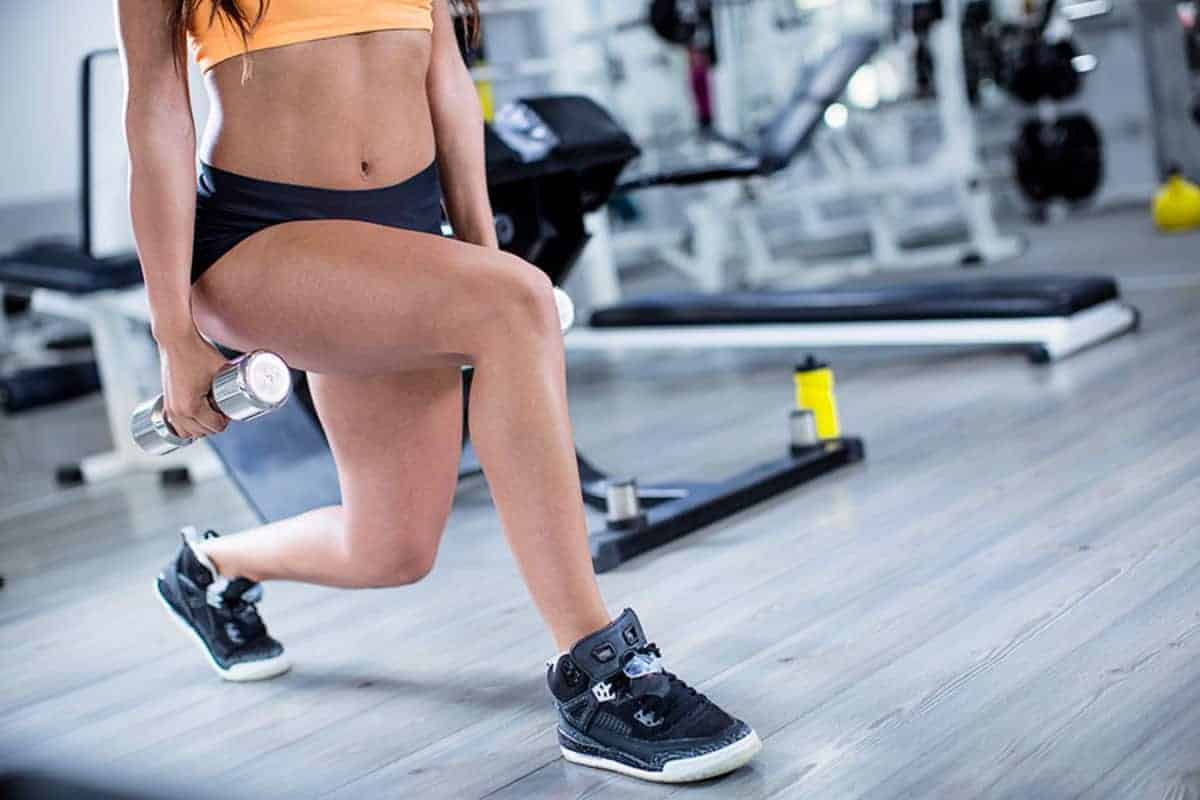In this article, we will review the current scientific literature with the aim of finding the best glute exercises.
What is the function of the gluteus maximus?
The gluteus maximus is one of the main hip extensors, which is why it is very important to train it as it acts in movements of our daily life and in many sports actions (14).
The main function of the gluteus maximus is hip extension (moving the leg backward) and a secondary function is external rotation and pelvis stabilization.
A 2014 study observed an increase in the prominence of hip extensors in lower body exercises with high loads, such as the squat or the deadlift, and in explosive sports actions like jumping, sprinting, or changing direction (3).
The main hip extensors are the gluteus maximus, the long head of the biceps femoris, the semimembranosus, the semitendinosus, and the ischiocondylar portion of the adductor magnus (7, 15, 19).
However, scientific literature has shown that the main responsible for hip extension is the gluteus maximus, especially in those exercises where there is a simultaneous extension of the hip and knee, where the hamstrings are not sufficiently activated (13, 14, 17, 18).
Quantification of muscle activation through electromyography
To verify which exercises for the gluteus maximus show greater muscle activation, the percentages obtained in different studies using electromyography will be analyzed.
A current study showed that those exercises where there is a dynamic abduction and external hip rotation presented a higher percentage of gluteus maximus activation (from 79% to 113% of the maximum voluntary isometric contraction [MVIC]) (11).
Recently, a study has demonstrated that it is possible to achieve percentages above 60% of gluteus maximus activation in exercises using body weight (12).
However, it should be noted that numerous factors influence the muscle activation of the gluteus maximus, such as the percentage of external load, execution speed, fatigue level, or the mechanical complexity of the exercise (14).
Analysis of scientific evidence
In this analysis, we will observe numerous scientific articles where different exercises for the gluteus maximus were studied, focusing on hip extension.
To help trainers and physical coaches organize the exercises we will show below, we will consider that (14):
- From 0% to 20% MVIC, the activation of the gluteus maximus is low.
- From 21% to 40% MVIC, the activation of the gluteus maximus is moderate.
- From 41% to 60% MVIC, the activation of the gluteus is high.
- > 60% MVIC, the activation of the gluteus maximus is very high.
If you want a much more complete program, you can download it below
Un completísimo programa para más de 6 meses de entrenamiento.
Conseguirás potenciar tus glúteos de forma eficiente y estilizar tu figura.
Exercises observed in the analyzed scientific studies
Next, we will analyze the best exercises for glutes according to the analyzed scientific studies.
Step-up
The step-up is an exercise where a hip extension is performed when trying to step onto a step or a bench as shown in the previous image. Depending on how we step onto the step, the exercise would be slightly different.
In addition to the conventional step-up shown in the image, there is also the lateral step-up, the diagonal, and the crossover.
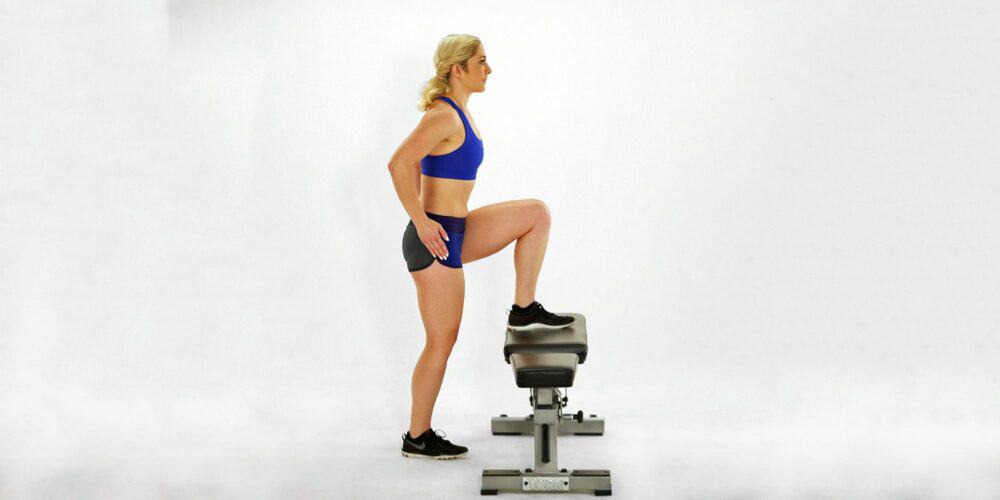
Hex bar deadlift
In this article, we will also analyze the muscle activation of the gluteus maximus in the deadlift with a hex bar.
We will also closely observe the conventional deadlift, the stiff-legged deadlift, and the sumo deadlift.
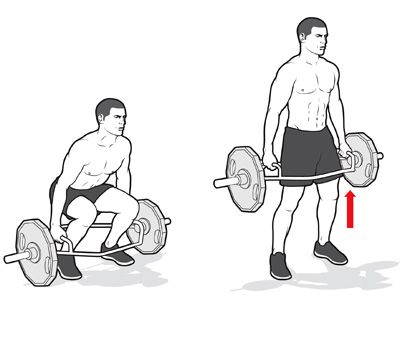
Squat
We cannot forget the squat in the analysis of exercises for the gluteus maximus. Therefore, we will also analyze its variations, such as unilateral squats, squats at different depths, the front squat, and the overhead squat.
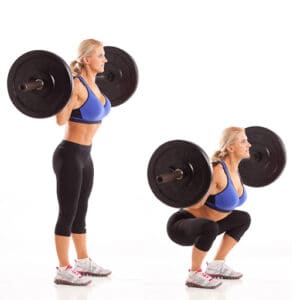
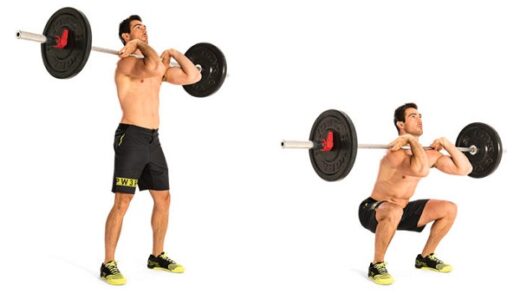
Bulgarian squat
The Bulgarian squat is also one of the exercises for the gluteus maximus that shows great muscle activation.
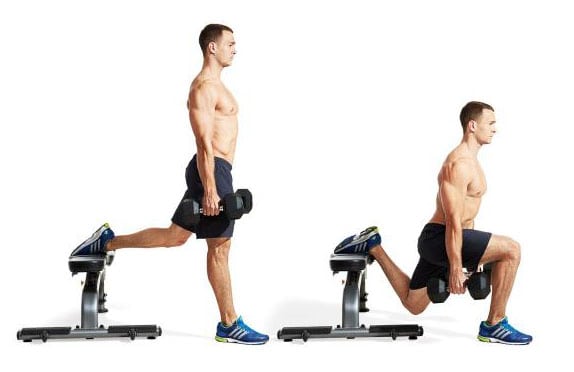
Hip thrust
The hip thrust is one of the most used glute exercises lately in training centers, and rightly so, as we will observe in the following sections, it shows high levels of muscle activation.
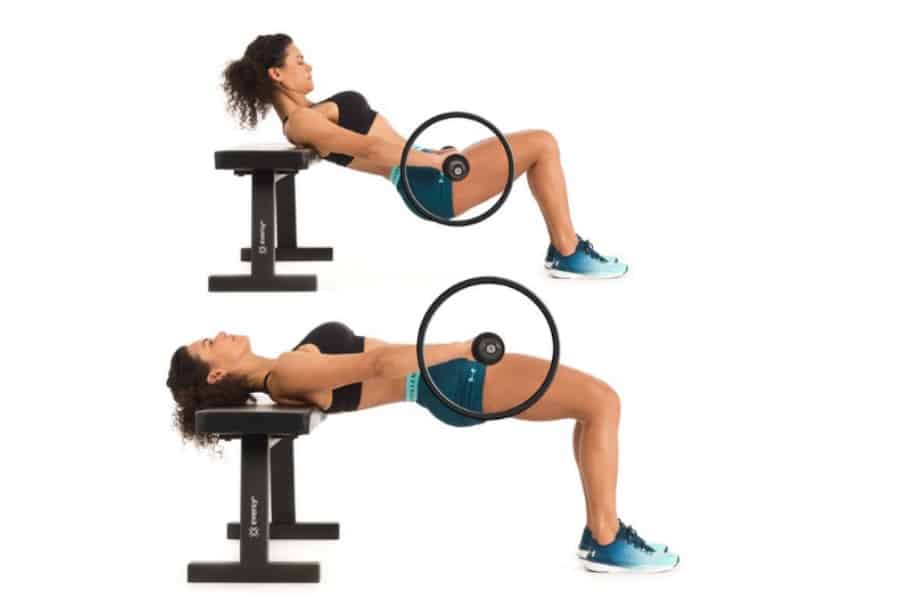
It should be noted that depending on the placement of the feet during its execution, the gluteus maximus will be activated more or less, as we will see later in this article.


Lunges
The lunges are also one of the glute exercises that should be present in our training.

One of the variants analyzed in the studies we will see below is the in-line lunges. This exercise consists of performing lunges with a stick on the back to keep the back completely straight.
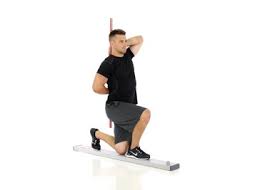
Analysis of the observed gluteus maximus exercises and their muscle activation percentages
In the following table, we can see the analyzed glute exercises and their muscle activations.
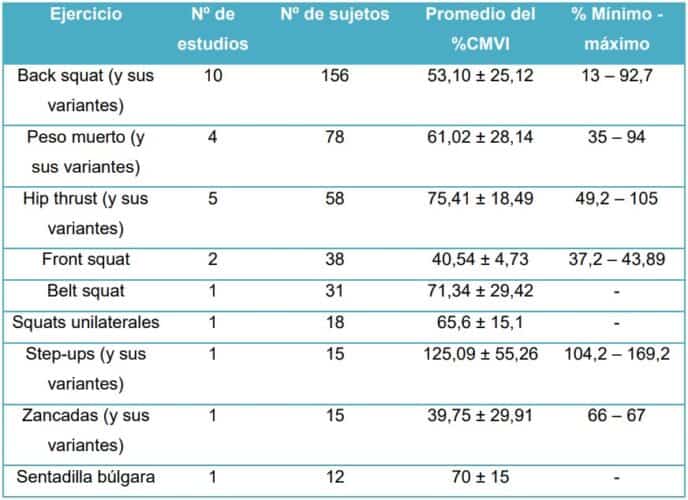
Classification of glute exercises from highest to lowest muscle activation
In the following table, we will see the glute exercises from highest to lowest in relation to their muscle activation.
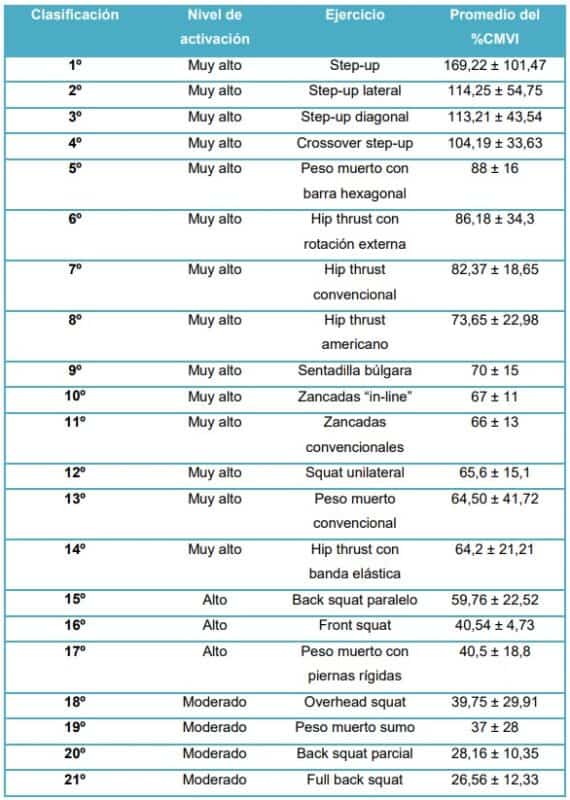
Graph of muscle activation percentages of the different analyzed gluteus maximus exercises
Next, we will see in this bar graph, the muscle activation percentages in the best glute exercises we have analyzed.
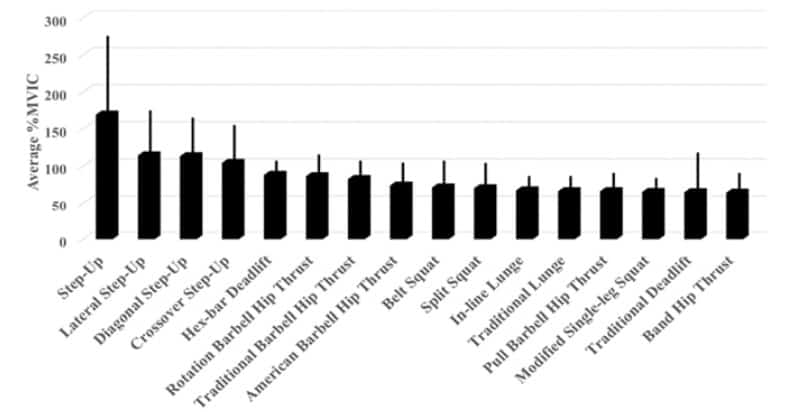
Discussion
After reviewing the tables and all the data presented above, we can see that the step-ups and their variants are the gluteus maximus exercises that show the highest percentage of activation (> 100% MVIC).
Other glute exercises that also show great muscle activation are the deadlift, the hip thrust, the lunges and the squat.
Step-ups are unilateral glute exercises that require great hip stabilization by the performer (14).
Additionally, during these exercises, the glute is responsible for hip extension while stabilizing the hip, preventing excessive adduction and internal rotation of the femur (1, 5, 11).
The high level of muscle activation in glute exercises like step-ups and their variants is due to the need to stabilize the knees and hips in the concentric and eccentric phases (14).
The difficulty of executing the step-up means that they cannot be performed with excessively high loads, which hinders the development of maximum strength and muscle hypertrophy (4).
On the other hand, the back squat and its variants are glute exercises commonly used in gyms and training centers.
The squat is the star exercise for strengthening and hypertrophying the lower limbs, but, depending on a series of factors such as the bar position or the depth of the squat, it will be one of the glute exercises with high levels of activation or with lower levels of activation (14).
Various authors observed that when the leg separation was greater than shoulder width in the back squat, the activation of the gluteus maximus was much higher compared to the execution of the back squat with legs separated at shoulder width (16).
Regarding the depth of the squat, several studies suggest combining different ranges of motion, which helps achieve great muscle and functional advances.
Possibly due to greater time under tension, greater mechanical tension, and greater muscle stretching (2, 6, 10).
Therefore, the different squat variants are highly recommended glute exercises to include in our training programs.
The hip thrust is another glute exercise that shows great activation of this muscle group. It should be noted that the position of the feet will be the determining factor affecting muscle activation during the execution of the exercise (14).
A study confirmed that performing the hip thrust by pushing against the ground with the feet outward (external rotation) is what makes it one of the glute exercises with the highest muscle activation (8).
An aspect to highlight is that the hip thrust is one of the glute exercises that achieves high activation percentages with both low and high loads (14).
It is also important to add that recent studies have observed high percentages of glute muscle activation by performing the hip thrust with 40% of 1RM (8).
Additionally, other authors found that performing the hip thrust at 36% of 1RM achieved similar levels of gluteus maximus muscle activation as performing the Romanian deadlift and the back squat at 100% of 1RM (9).
Finally, it should be noted that in each of the mentioned studies, the percentages of muscle activation will vary depending on (14):
- The area of the body where the electrodes are placed.
- The phase of the movement analyzed.
- The heterogeneity of the sample.
- The percentage of load used in the study.
- The experience level of the subjects participating in the study.
Conclusions
After this study, we can observe that there is a large number of exercises with which we can achieve high levels of gluteus maximus activation.
Therefore, when designing a training program, we must consider the individual needs of the trained person.
It is important to add that there are no good or bad exercises, but those that are adapted to the person and performed with appropriate loads and volumes and those that are not.
We have also seen that the gluteus maximus can be perfectly worked with body weight, as the exercises with the highest muscle activation of the gluteus maximus were the step-up and its variants.
It is worth noting that, after the step-up and its variants, the glute exercises that show higher levels of activation are the squat, the hip thrust, and the deadlift and their respective variants.
References
- Baker, P. J., Hapuarachchi, K. S., Ross, J. A., Sambaiew, E., Ranger, T. A. and Briggs, C. A. (2014). Anatomy and biomechanics of gluteus maximus and the thoracolumbar fascia at the sacroiliac joint. Clinical Anatomy 27:234–240
- Bazyler, C. D., Sato, K., Wassinger, C. A., Lamont, H. S., and Stone, M. H., (2014) The efficacy of incorporating partial squats in maximal strength training. Journal of Strength and Conditioning Research 28(11), 3024–3032.
- Beardsley, C., and Contreras, B. (2014). The increasing role of the hip extensor musculature with heavier compound lower-body movements and more explosive sports actions. Journal of Strength and Conditioning Research 36(2), 49-55
- Behm, D. G., and Anderson, K. G. (2006). The role of instability with resistance training. Journal of Strength and Conditioning Research 20(3), 716-722
- Blemker, S. S. and Delp, S. L. (2005) Three-dimensional representation of complex muscle architectures and geometries. Annals of Biomedical Engineering 33(5), 661-373.
- Bloomquist, K., Langberg, H., Karlsen, S., Madsgaard, S., Boesen, M. and Raastad, T. (2013) Effect of range of motion in heavy load squatting on muscle and tendon adaptations. European Journal of Applied Physiology 113(8), 2133-42.
- Broski, S. M., Murthy, N. S., Krych, A. J., Obey, M. R. and Collins, M. S. (2015) The adductor magnus “mini-hamstring”: MRI appearance and potential pitfalls. Skeletal Radiology 45(2), 213-219.
- Collazo García, C.L., Rueda, J., Suárez Luginick, B. and Navarro, E. (2018) Differences in the Electromyographic Activity of LowerBody Muscles in Hip Thrust Variations. Journal of Strength and Conditioning Research. In press
- Delgado, J., Drinkwater, E.J., Banyard, H.G., Haff, G.G. and Nosaka, K. (2019) Comparison Between Back Squat, Romanian Deadlift, and Barbell Hip Thrust for Leg and Hip Muscle Activities During Hip Extension. Journal of Strength and Conditioning Research 33(10), 2595-2601.
- Kubo, K., Ikebukuro, T. and Yata, H. (2019) Effects of squat training with different depths on lower limb muscle volumes. European Journal of Applied Physiology 119(9), 1933-1942.
- Macadam, P., Cronin, J. and Contreras, B. (2015). An examination of the gluteal muscle activity associated with dynamic hip abduction and hip external rotation exercise: A systematic review. International Journal of Sports Physical Therapy 10(5), 573.
- Macadam, P. and Feser, E.H. (2019) Examination of gluteus maximus electromyographic excitation associated with dynamic hip extension during body weight exercise: a systematic review. International Journal of Sports Physical Therapy 14(1), 14-31
- McCurdy, K., Walker, J., Yuen, D. (2018) Gluteus Maximus and Hamstring Activation During Selected Weight-Bearing Resistance Exercises. Journal of Strength and Conditioning Research. 32(3), 594-601
- Neto, W. K., Soares, E. G., Vieira, T. L., Aguiar, R., Chola, T. A., Sampaio, V. L., & Gama, E. F. (2020). Gluteus Maximus Activation during Common Strength and Hypertrophy Exercises: A Systematic Review. Journal of sports science & medicine, 19(1), 195–203.
- Neumann, D.A. (2010) Kinesiology of the hip: a focus on muscular actions. Journal of Orthopaedic & Sports Physical Therapy 40(2), 82-94
- Paoli, A., Marcolin, G. and Petrone, N. (2009) The effect of stance width on the electromyographical activity of eight superficial thigh muscles during back squat with different bar loads. Journal of Strength and Conditioning Research 23(1), 246–250.
- Sugisaki, N., Kurokawa, S., Okada, J. and Kanehisa, H. (2014). Difference in the recruitment of hip and knee muscles between back squat and plyometric squat jump. PLoS ONE. 9(6), e101203.
- Williams, M.J., Gibson, N., Sorbie, G.G., Ugbolue, U.C., Brouner, J., and Easton, C. (2018) Activation of the gluteus maximus during performance of the back squat, split squat, and barbell hip thrust and the relationship with maximal sprinting. Journal of Strength and Conditioning Research 9, 309
- Youdas, J.W., Hartman, J.P., Murphy, B.A., Rundle, A.M., Ugorowski, J.M. and Hollman, J.H. (2017) Electromyographic analysis of gluteus maximus and hamstring activity during the supine resisted hip extension exercise versus supine unilateral bridge to neutral. Physiotherapy: Theory and Practice 33(2), 124-130.
